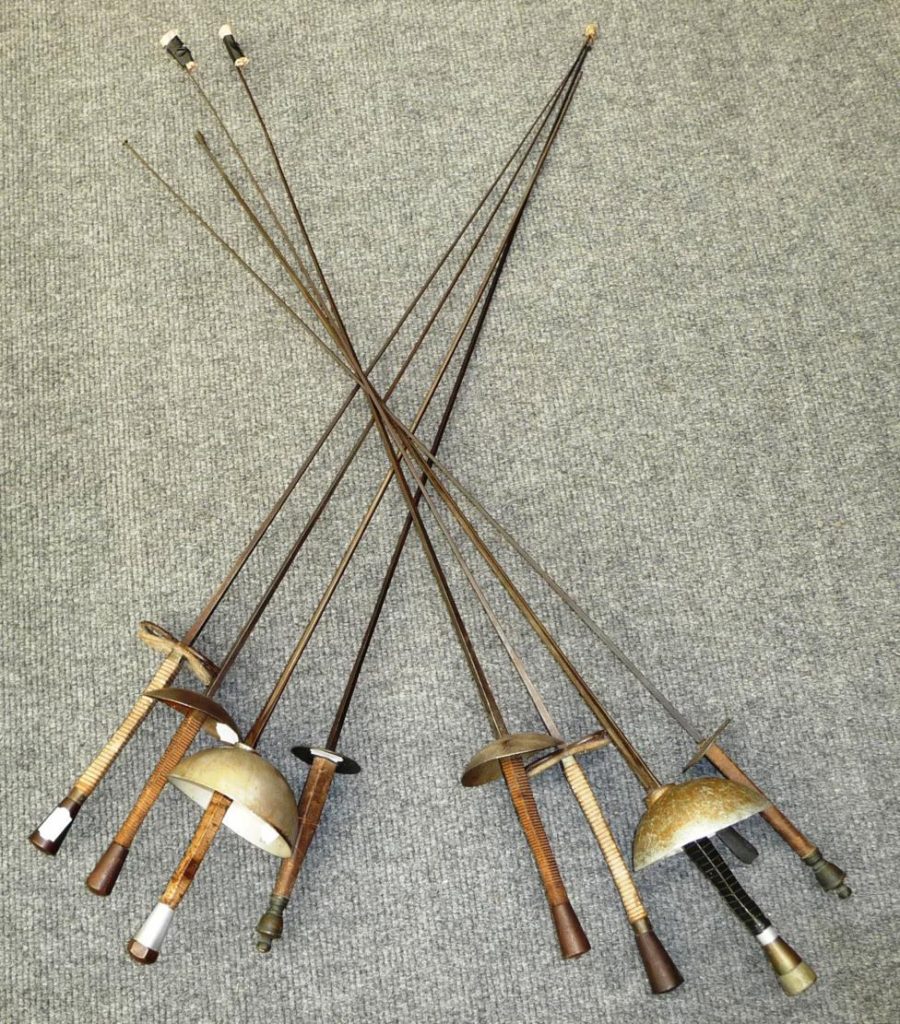The Stony Brook University Fencing Club will look to have a successful semester in competitions despite some financial shortcomings that may prevent them from performing as well as other schools’ teams that have a larger budget than its $15,397.
“We’re a club team, so all these others schools have designated coaches,” senior Michael Dadurian said. “We’re like the only club team that participates in tournaments that doesn’t have a coach in each specialization.”
In fencing, points are awarded depending on which of three weapons are used, all of them being metal. A foil, a flexible sword with a rectangular blade that weighs under a pound, can only be used to strike the torso. A sabre, a sword with an X or Y-shaped blade, can be used to slash the arms and mask as well. An epee, with a three-sided blade, allows the fencer to strike anywhere on the opponent’s body.
The club’s coach, Kevin O’Grady, specializes in using the sabre. Junior Brianna Bawayan, the club’s treasurer, said that the team would benefit from finding additional coaches that specialize in the other two weapons.
“[O’Grady] has done an amazing job with helping us prepare for our tournaments,” Bawayan said. “However, he specializes in only one weapon, and although he does his best to help out the entire club, we would like to find coaches that specialize in epee and foil.”
Dadurian finds it hard for the club to compete against teams that are trained by specialized coaches, since they have better structured practices nearly every day of the week.
“We help each other out when we can,” Dadurian said. “The competitive team kind of just needs to know how to adapt every match since we don’t have a coach to tell us what to do.”
“If the club had a higher budget, we would go to more tournaments, get more involved in the community and get new equipment and outfits,” said sophomore Mierhamza Rahimi, the club’s president.
Although the fencing club would attend more tournaments, a significant portion of the budget is needed to rent out cars and hotel rooms for the competitive team. “Compared to other schools, I would say that our budget is fairly low,” Bawayan said. “Some universities, such as University of Florida and William and Mary, can easily afford to take buses in order to get to competitions that are held quite a distance away from them. For our club, we need to apply for a grant so we don’t waste more than half our funding on attending a tournament held in places like Tennessee or Virginia.”
A couple of financial factors that determined the fencing club’s budget is the amount of the student activity fee and the needs of other clubs. “A lot of sports clubs in particular have the issue of comparing themselves to other schools,” USG Treasurer Taylor Bouraad said. “Not every school has a club ice hockey team, which takes up a large majority of the club budget ($99,146), and ice hockey needs that budget to function.”
The fencing club could utilize grants more often. Clubs can get up to two national or regional event grants per year, which would cover $4,000, 80 percent of the total cost of the trip or $400 per person, whichever is less. Clubs usually get the $4,000 for each trip, Bouraad said.
“The club’s goals for the semester are to improve competitively,” Dadurian said. In addition to competing, the club supports newcomers by teaching them recreationally.
“We try to promote more of the competitive team, obviously,” Rahimi said. “At the same time, we also want to keep people at the level they’re comfortable with.”
Fencing requires a very unique skillset. A good fencer doesn’t try to be too fancy but uses finesse, speed and control when performing basic actions like parries and lunges, according to Dadurian.
“New fencers display a lack of control and gameplan,” Dadurian said. “You have to play to your strengths when fencing, and that’s what new fencers don’t know how to do. They’re just trying to remember how to stand and do the basics.”
It goes to show that anyone can pick up fencing with enough hard work; Rahimi didn’t start fencing until his first semester of college.
“In the beginning, I was like everyone else,” Rahimi said. “You see swords and you think it’s cool. At first, it’s difficult and you want to give up, but once you really put yourself into it, you discover how exhilarating and intense it could be.”
Rahimi said he tries to limit the competitive team to 24 people so the budget works out, but there are over 50 people in the club altogether.
Despite the blend of competitive and recreational members, the fencing club melds together well. “As new members keep pouring in, we’re just as welcoming,” Bawayan, who has been fencing since her junior year in high school, said. “We’re a close circle.”




Comments are closed.